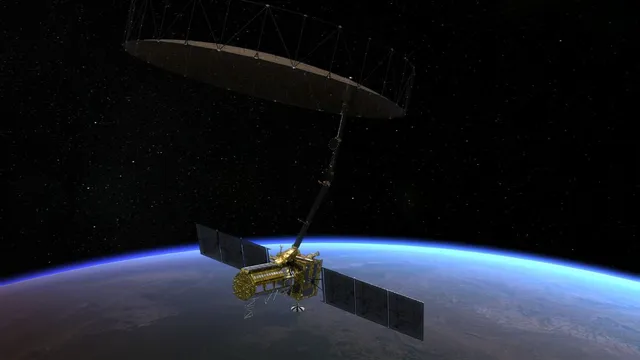- By Supratik Das
- Mon, 28 Apr 2025 12:39 PM (IST)
- Source:JND
Following a long wait, India's Space Research Organisation (ISRO) and the United States' National Aeronautics and Space Administration (NASA) have completed arrangements for the long-awaited launch of the NASA-ISRO Synthetic Aperture Radar (NISAR) mission. The launch is set to occur this June from Sriharikota, marking a significant achievement in Earth observation and the space cooperation between the two nations. The GSLV-F16 mission, carrying one of the world's largest and most advanced radar imaging systems, will bring unparalleled information on the surface of the Earth, assisting in tracking changes in land, vegetation, and ice cover.
ISRO has formally initiated the launch campaign, with the second stage (GS2) of the GSLV launch vehicle moved from the ISRO Propulsion Complex to the Sriharikota launch pad. Final integration and checks are now in progress, as the agencies go through appropriate launch windows in June 2025. In a major milestone, ISRO Chairman V Narayanan launched the GS2 phase in late March and paved the way for one of the year's most ambitious space missions.
A Decade Of Work: NISAR's Unique Capabilities
The NISAR satellite, which has been under development for almost a decade, has two formidable radar payloads — NASA's L-band radar and ISRO's Space Applications Centre (SAC) in Ahmedabad-developed S-band radar. Both radar sensors are capable of penetrating cloud cover and functioning nonstop day or night, permitting around-the-clock monitoring of the land and ice surfaces of the Earth. Twice in every 12 days, the satellite scans almost the whole world, helping to provide vitally important observations on climate change, ecosystem upsets, as well as on natural hazards. Originally planned for early 2024, the mission was delayed because component corrections were needed, but the final assembly and testing were successfully done last year. Alongside the preparations for launch, the SAC has arranged a workshop this week for Indian private start-ups. The event is to discuss commercial applications of NISAR's Earth observation features and to promote innovation in India's emerging space-tech industry.

NASA-ISRO Synthetic Aperture Radar (NISAR). | Credits: ISRO
Semi-Cryogenic Engine Tests Enhance Future Missions
In the meantime, ISRO has successfully performed a short-duration hot test of its semi-cryogenic engine at the ISRO Propulsion Complex (IPRC) in Mahendragiri on April 24. The 3.5-second ignition test confirmed the stable and controlled operation of the power head systems of the engine, a crucial step towards future heavy-lift missions. “This series of tests ensures the design integrity and performance of critical subsystems, including turbo pumps and control systems,” ISRO said in a statement. Adding a new dimension of excitement, sources confirm that an Indian astronaut will also join a historic NASA mission later this year, highlighting the increasing Indo-US cooperation in human spaceflight.

